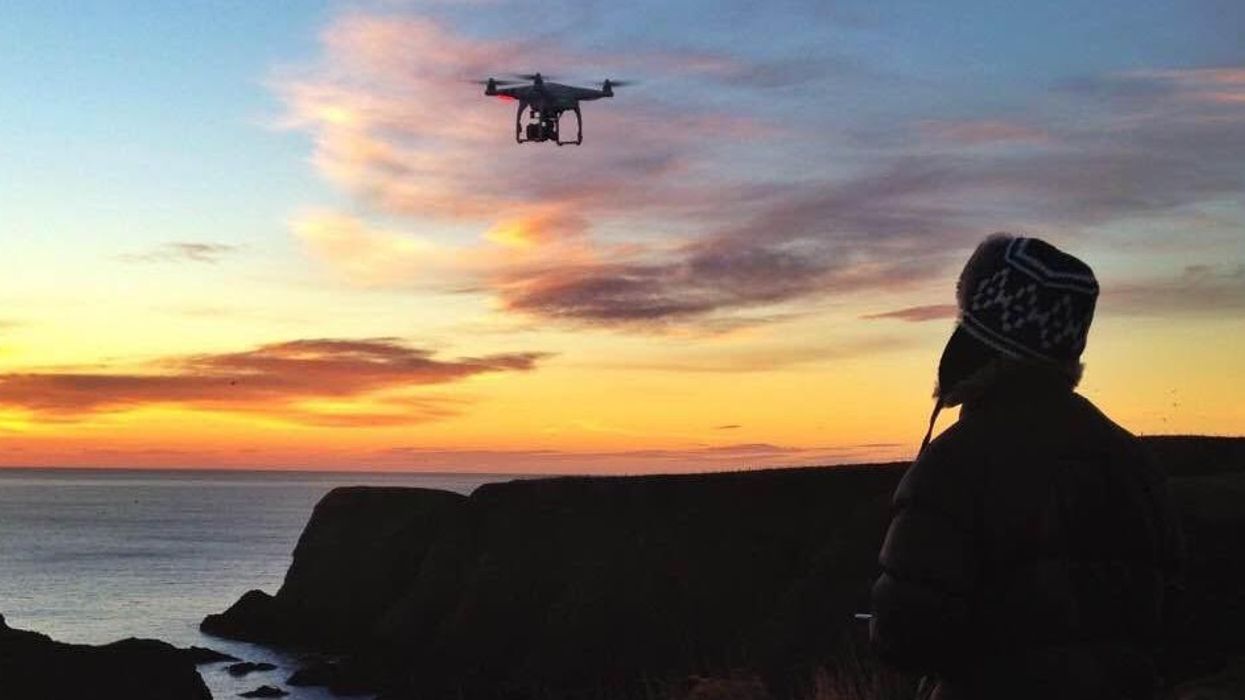New to Drones? Here Are 10 Helpful Tips for Being Safe & Getting Great Shots
Drones are all the rage these days, and for good reason.

Not only do they allow for an entirely unique perspective, but the technology has become ubiquitous and relatively affordable. This means that, every single day, someone is taking to the skies for the very first time. Unfortunately, piloting a drone and operating the camera at the same time is far more difficult than it looks. Secondly, and more importantly, is the matter of public safety. Depending on where and how you fly, you could be unwittingly risking the safety of people around you. That's not something to be taken lightly.
Luckily, UK-based filmmaker Sebastian Solberg has some helpful drone filmmaking tips that will help first-time fliers operate their new UAVs safely, and get great shots at the same time. Check it out:
Sebastian also shared a few more tips in writing.
- If it’s your first time flying make sure you practice in a field far away from people, cars, and houses. It’s all about muscle memory, so fly on a daily basis for a few weeks or months in different locations before using it on set. Practice, practice, practice.
- Depending on where you’re flying, check the rules, do a quick Google. For example, you’re not allowed to fly a drone in London unless you have a permit. But you can fly over the parliament buildings in Budapest no problem. As this is a new technology lots of countries are still catching up and don’t have any drone rules. Always use common sense when flying.
- The best results are produced when flying the drone slowly with long nice fluid movements. Get close to an object and slowly rise above it to reveal the amazing vistas in front of you.
- Never fly above crowds, it’s illegal and very dangerous. Just don't do it.
- Make sure you don’t fly above 500 feet or near airports. The last thing you want to be doing is crashing into a plane. Plus, altitude restrictions change depending on where you're flying, so again, make sure you Google UAV rules for wherever you're flying before you shoot.
- The drone really shines when you can get shots that aren’t possible with a helicopter. For example when I was shooting in Scotland I got a shot of the drone flying through a castle window and it looks amazing. Be creative and try and get shots that nobody has seen before.
- Experiment with the settings on your camera that you’ve attached to the drone and see what results it produces. The more you can understand about this technology, the better equipped you’ll be as every shoot is different and may require a different look. For example if you film at 30 frames per second and then slow it down and convert it to 25 or 24 frames per second in post and the footage will have an almost dream like feel to it.
- Plan each shot before you take off. Each battery on a drone lasts about 15 minutes, so you want to maximize flight time. Like any shoot the more you plan the better the results will be (keep spare batteries on hand too).
- This is an obvious one but always check the weather conditions before flying the drone. Most drones are pretty good in wind, but if it’s super windy or raining and you don’t feel comfortable flying the drone, wait until the wind has calmed down or the rain has stopped. It can be unsafe to fly in high winds, and more than likely the footage will be unusable anyway, so just wait until the weather is more favorable.
- If you want to produce something amazing it’s got to start with a great idea. Always put the story before the tools. Audiences want to see people, stories, and experiences that they connect with on an emotional level. As filmmakers, we create content that entertains, moves, and inspires people. Drone technology won’t turn you into a great filmmaker but it will enhance your skills as a story teller and if used well will make your work shine.
So there you have it, 10 beginner tips for safer, more effective drone filmmaking. For you more experienced drone filmmakers out there, if you could go back in time and give yourself one piece of advice before your first drone flight, what would it be? Share your answers with us down in the comments!
Source: Sebastian Solberg












